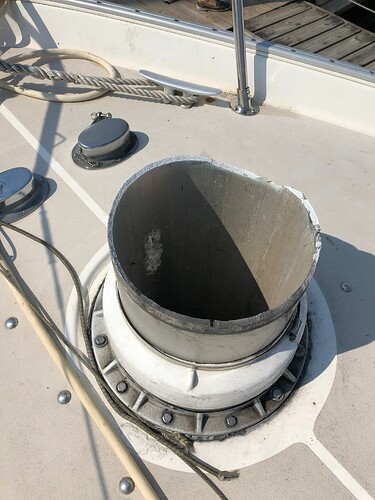Hi Nonsuch sailors,
I would like to start a thread to collect info on Nonsuch mast failures - I think we all need to be aware. We had one in our weekly Wed night race in Cape Breton this week.
I am trying to help the owner who is not an INA member, to figure out how to deal with this. We have found a salvage aluminum mast, so there is a potential easy solution… i won’t go any farther on this as it is underway with insurance, adjusters and all…
I am interested to know more about other known aluminum mast failures. In my research since my friend’s incident last Wednesday, I found a thread (in our Google discussion group) about a UK owned Nonsuch 30 that had a sudden breakage at deck level, while sailing. Bang, and it was down. No damage or human injury otherwise in either event. (c.2009 I think). In the 2009 incident, insurance company declined to cover, due to fine print: ‘gradual corrosion causing crystallization of the aluminum, due to to contact with Stainless steel clamp that slid off,’… resulting in reduced tension strength… Insurance does not usually cover wear and tear and gradual degradation…etc…
The insurance company cited corrosion of the aluminum due to contact with stainless steel. based on their engineer’s report that cited crystalization indicates reduced tensile strength.





